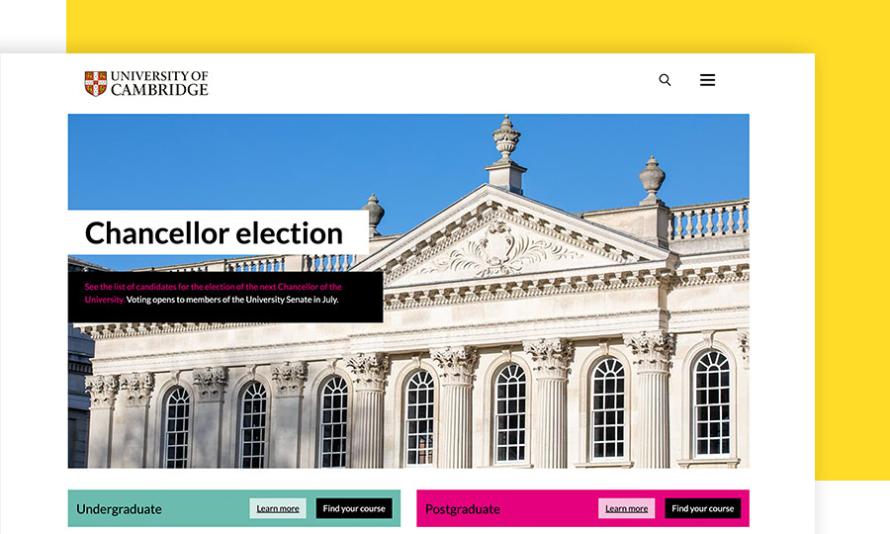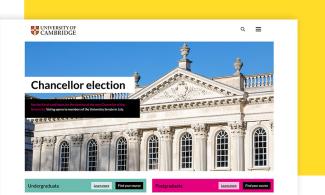Filters
Content Type
Topics
Scaling Smart: Inside Cambridge’s Web Transformation for 2,000 Sites
The University of Cambridge is no stranger to complexity, academically or technically. With a digital estate spanning more than 2,000 websites, including departments and institutes, the challenge isn’t just modernizing its web presence. It’s building a foundation that can scale, remain secure and reflect the University’s long-standing tradition of innovation.
We had a very small team—just two people fully focused on Drupal—managing patches and updates, often late at night. It wasn’t sustainable. We needed a more resilient setup for high-traffic sites, with easier maintenance and upgrade paths.”
- Barney Brown, Head of Digital Communications at Cambridge University
That’s what led the University to explore cloud hosting and begin the discovery and tendering process, which Pantheon and Zoocha have eventually won.
Cambridge’s evolution became less about a single product or platform and more about a mindset shift. The University made a conscious decision to lean further into open source. Pantheon and Zoocha, the University’s specialist Drupal agency, helped to implement that choice.
Legacy constraints: Aegir and the limits of on-prem hosting
Image

Until recently, the university’s websites were hosted on-premises, using a highly customized stack built around the Aegir multisite management tool. While Aegir allowed dozens or even hundreds of higher education Drupal sites to share a “platform,” it came with significant trade-offs:
- Lack of isolation meant a DDoS attack or outage on one site could affect others on the same stack.
- Complex server architecture spanned more than 25 virtual machines across seven infrastructure stacks, including four separate Aegir installations.
- Slow upgrade cycles due to difficulty in applying OS or PHP updates and lack of compatibility with Drupal 8, 9, and 10.
- Manual code propagation with little version control, as changes had to be deployed independently across Aegir instances.
- Limited scalability for modern Drupal sites, as Aegir couldn’t handle more than a handful of Drupal 9+ deployments.
These constraints created operational bottlenecks and increased the risk profile across the university’s digital estate. The solution came with Pantheon.
When compared with other providers, we found that Pantheon had the reliability at scale and tooling, which best aligned with our ways of working. In particular, source-driven development and the capability for CI/CD. Members of our DevOps team can now own the whole service and deploy sites easily to isolated containers without worrying about server stacks. Sites can be reliably generated from code, which allows for more flexible development and automated testing.”
- Brent Stewart, Software Developer Manager at Cambridge.
The solution: Pantheon + Zoocha
Cambridge worked with Pantheon and long-time partner Zoocha to architect a modern, scalable solution built around open-source tools and WebOps best practices.
A migration of this scale—starting with more than 500 sites moved in under 12 months—required a tightly coordinated team. Pantheon’s platform and Zoocha immediately addressed key limitations:
- Site isolation and uptime protection through container-based infrastructure.
- Drupal 7 extended support with Pantheon’s unique offering gave Cambridge the time to modernize.
- Multidev environments, which significantly improved issue diagnosis and testing workflows.
- Integrated Git workflows, enabling better traceability and team collaboration.
The impact on our developers has been enormous. Multidevs, Git traceability—it’s made testing and deploying changes so much faster.”
- Jamie Giberti, Cambridge’s Drupal Principal Software Developer
Zoocha, who initially came on board to assist with the migration, now supports ongoing platform evolution. Their experience with accessible design and federated governance models has been critical to Cambridge’s broader vision.
Reimagining governance for a federated institution
Cambridge is not a monolith. It is a federation of over 100 departments and institutes, each with its own culture, needs and approach to digital. Standardizing in that environment required a light-touch model of governance—one built not on mandates, but on enablement.
To various committees onboard, Brown explained that prospective students navigating the University of Cambridge's digital presence often face a fragmented and confusing journey. A simple task, such as finding information about studying physics, for example, can involve multiple disconnected touchpoints, reflecting an organically grown web estate managed in silos across departments.
Cambridge is now working to simplify and centralize its web ecosystem, focusing on user-first design and consistent content strategy. By consolidating sites and reducing redundant content, the University aims to create a streamlined, reliable experience with clear pathways and a single source of truth, making it easier for users to find what they need and for teams to maintain.
“Standardizing web infrastructure is about getting our stakeholders to agree which things make sense to replicate, and which things should be customised locally. It’s like door handle design, doors tend to have them in the same place to encourage ease of use. Why would we deliberately put them out of reach to be different? It’s the same with our websites: we want the obvious things to be done consistently well across the University, but allow the look and feel to be adapted to our stakeholders and their unique users’ requirements. You should be able to customize your sites while leveraging a strong foundation rather than reinventing,” said Brown, Head of Digital Communications at Cambridge.
His partner at Zoocha said that open source is often the best platform that helps diverse stakeholders find common ground.
“Drupal gives higher ed teams the freedom to be creative while still working within a consistent framework. It’s flexible enough to support a wide range of needs, yet structured enough to deliver a unified experience – essential when you're managing a digital estate as large and complex as Cambridge's. Drupal is where the magic happens,” said Will Huggins, Zoocha’s CEO.
Infrastructure that meets the moment and foundation for the future
The migration wasn’t just a tech refresh—it was a shift in operational philosophy. Instead of a brittle, hard-to-upgrade infrastructure, Cambridge now runs a distributed but unified web platform. On Pantheon, sites are launched faster, updated automatically and monitored continuously.
The flagship site alone sees over 1.1 million pageviews a month—more than 13.5 million annually. During high-traffic periods like open days or results announcements, Pantheon’s scalable infrastructure ensures availability and performance.
And with more than 500 sites migrated so far, the project is already delivering meaningful operational gains.
Cambridge’s model of digital governance reflects the nature of the institution: decentralized, independent and diverse. Rather than impose a one-size-fits-all approach, the University is building a framework of shared tools, reusable components and accessible-by-default design systems. These empower departments to create content independently while maintaining consistency and compliance.
Cambridge’s move to Pantheon and Drupal isn’t just a migration story—it’s their strategy for the next decade. By investing in open platforms, standardized tooling and WebOps workflows, the University is laying the groundwork for digital sustainability and innovation.


